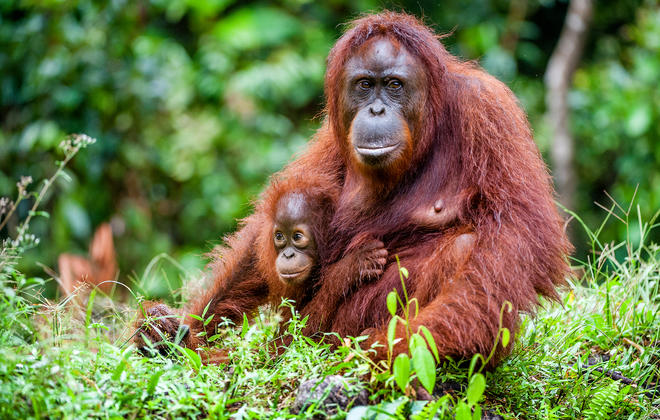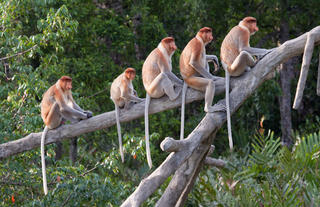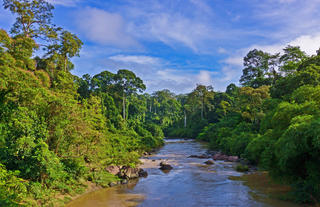Malaysia is a nation characterised by intriguing contrasts. It is a complex combination of various cultures, diverse landscapes and architectural styles. Chinese joss houses, Hindu temples and gold-domed mosques exist alongside state-of-the-art skyscrapers and contemporary business complexes. The land itself is divided into two parts by the South China Sea. Peninsula Malaysia (West Malaysia) boasts vast bustling cities, stately colonial architecture, misty tea plantations and tranquil islands. Malaysian Borneo (East Malaysia) features lush jungles brimming with exotic animal and plant life, towering granite peaks and even some remote indigenous tribes. Outdoor enthusiasts can indulge in a range of adventurous activities including hiking through some of the world’s oldest tropical rainforests, scuba diving in some of the world’s most renowned dive sites, or white water rafting in one of the nation’s numerous exquisite national parks. Alternatively spend your days exploring the supercharged capital, Kuala Lumpur, with its pockets of rainforest interspersed between towering high rise buildings or simply relax under palm tree-lined beached.
Sepilok, amidst densely forested terrain and lush landscapes, is situated within the Malaysian Sabah District of North Borneo. This alluring town is home to wonderful attractions and exciting activities, which draw in travellers from far and wide. Nature lovers and outdoor enthusiasts can enjoy the many hiking and paddling opportunities; while those interested in animal care can visit various sanctuaries which include: Borneo Sun Bear Conservation Centre, a wonderful establishment which provides care to rescued sun bears; and the acclaimed Sepilok Orangutan Rehabilitation Centre, a mixed dipterocarp forest which offers a natural home to orphaned orangutans. A must-see attraction is the Bristlehead Tower, a wondrous viewing platform providing panoramic views over the surrounding scenic landscapes.




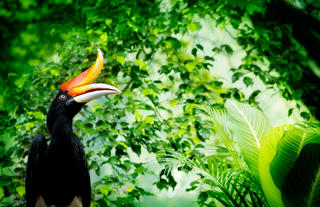
Lankayan Island, in Malaysia's Sulu Sea, is a secluded tropical destination known for exceptional diving and snorkelling. Part of a marine park, its waters are home to vibrant coral reefs and diverse marine life, including whale sharks. The island features white sandy beaches and clear blue waters, ideal for relaxation and water activities. A highlight is the turtle hatchery, where visitors can observe the conservation of sea turtles and the release of hatchlings. Lankayan Island's commitment to environmental preservation makes it a unique destination for eco-conscious travellers. It offers a serene atmosphere for nature lovers searching for a relatively untouched setting.





A jewel-like tiny island in the Sulu Sea, a 1.5 hour boat rides north of Sandakan; Lankayan has been declared part of an immense Marine Protected Area to adopt the eco-tourism concept. Unpopulated and covered by thick tropical island vegetation on its topside, this peaceful, untouched little bit of paradise is ringed by an endless pure white sandy beach, offering simply elegant and exquisite accommodation in all 23 wooden, roomy and perfectly appointed seafront chalets. While the ideal destination for those who search for tranquility and relaxation in a virgin natural setting and for families with children, Lankayan Island is also becoming one of the hottest diving destinations on the map today: its dive sites – all just a few minutes away – boasting unbelievably colorful macro, fauna, fascinating wrecks and in season from March to May, regular sightings of gigantic and harmless whale sharks, the “dream date ” of every diver in the world. Situated within the Sea Turtle Corridor, Lankayan Island is also a nesting place and foraging ground for sea turtles; most commonly Green and Hawksbill Turtle. Therefore, guests will have a chance to see turtles nesting as well as new hatchlings of baby turtles released to the sea especially in season from June to September
---------------------------------
Lankayan Island is a true Macro world paradise. Saved are large stretches of beautiful hard and soft corals belonging to numerous genera, among which are multitudes of macro world subjects and juvenile fishes, colorful to the extreme.It is possible that some of the species found here are yet to be described. Pelagic also abound here, from large schools of scads, yellow tail barracudas, jacks, and many more. The many schools of medium to large hump head parrotfish are always an exciting encounter. Sometimes, the diver is lucky enough to meet large rays, guitarfish and even manatees. For those more inclined towards the smaller denizens of the reefs, there are numerous juvenile fishes, clown anemone fishes, decorator and spider crabs, coral shrimps, nudibranchs, prawn gobies and abundant of rarer subjects such as jawfish, ornate ghost pipefish and frogfish.Divers are sure to appreciate the remaining large stretches of unspoiled lettuce, staghorn and other hard corals as well as the many varieties of soft corals, feather stars, sponges, sea fans etc. The many different types of anemones and their different partners, the clown anemone fish, shrimp and porcelain crabs are a definite sight.We have four totally different wrecks home to abundant of fishes large and small. Our “Lankayan Wreck” was an ocean going fish poaching vessel appropriately demised in the area of its illegal activities. It is now the base of numerous fishes, from small cardinals and yellow pikes to large groupers, cobias and emperors. A very impressive site and at only 23 meters. Look out for the ornate ghost pipefish.





An impressive landmark on the map of Malaysian Borneo, Kinabatanagan River meanders for 560 kilometres from its source in southwestern Sabah in the soaring Crocker Range to its vast river mouth at the Sulu Sea. It is the longest river in the incredibly scenic state of Sabah and provides a rich ecosystem for a host of wildlife. A boat cruise down the river is the best way to explore the region’s lush rainforests, sparkling lakes, and abundant wildlife, with both day trips and overnight water-based safaris offered to visitors. Regularly sighted wildlife includes proboscis monkeys, orangutans, crocodiles, macaques hornbills, Irrawaddy dolphins, owls, civets and if you’re lucky – the endangered Borneo pygmy elephant.



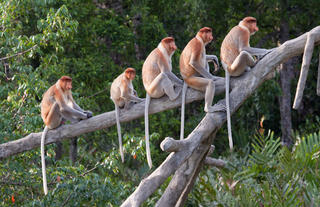
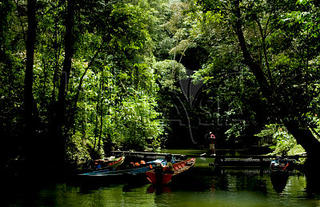
Spanning over 438 square kilometres of relatively undisturbed landscapes, Danum Valley Conservation Area is extraordinarily rich in both wildlife and plant life. Dubbed the the130-million-year-old rainforest, Danum Valley's low-lying wilderness of virgin rainforest is recognised as one of the planet's hubs of biodiversity. Its vast canopies shelter some 300 bird species and over 100 mammals - including the clouded leopard, Malayan sun bear, Bornean orangutan and the rare Bornean pygmy elephant - and a profusion of vividly coloured butterflies. This exceptional ecosystem is a popular research destination among natural scientists, and it is possible to attend talks by resident environmental experts at the Danum Valley Field Centre. A network of trails wind through the surrounding jungle, passing viewing platforms tucked amidst the treetops, a suspension bridge over the Segama River, cascading waterfalls and even several ancient burial sites.
